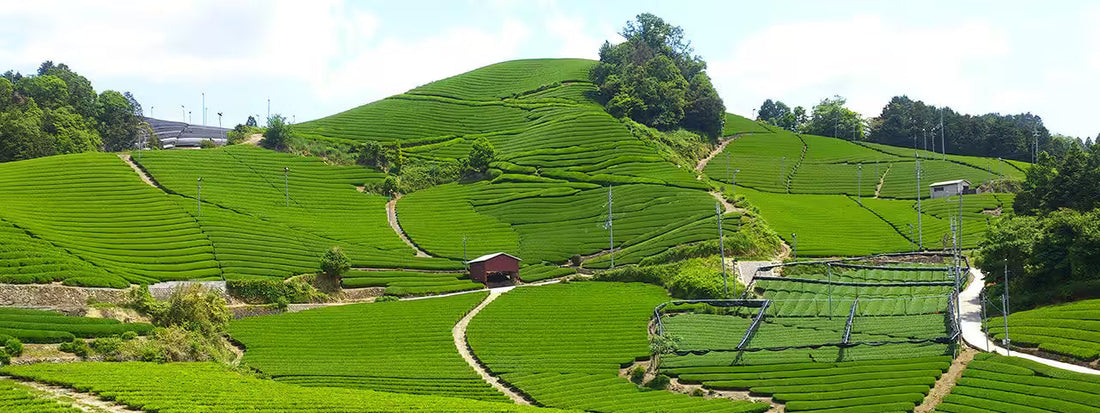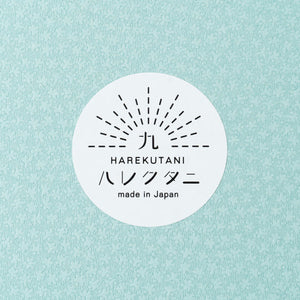
More Than a Drink: Why Your Next Cup of Tea Should Be from Japan
Share
In a world filled with endless beverage options, there's a reason the vibrant, emerald-green allure of Japanese tea has captivated people for centuries. From the meditative whisking of matcha to the refreshing clarity of a freshly brewed sencha, Japanese green tea offers a unique experience that transcends the simple act of drinking.
But what makes it so special? And if you're ready to explore, where do you even begin?
This guide will walk you through why you should choose Japanese green tea and matcha, and highlight the premier regions that produce the finest leaves in the world.
The Japanese Difference: Quality, Flavour, and Wellness
Not all green teas are created equal. The Japanese approach to cultivation and processing results in a product that stands apart in flavour, health benefits, and cultural significance.
1. The Flavour: Umami and Freshness
The secret to Japanese green tea's signature flavour lies in its processing. Unlike many other green teas which are pan-fired, Japanese tea leaves are briefly steamed moments after harvesting. This critical step halts oxidation, locking in the leaves' brilliant green colour and fresh, vegetal notes.
This process also preserves a coveted flavour profile known as umami—a rich, savoury, and deeply satisfying taste. High-grade Japanese teas, especially shade-grown varieties like Matcha and Gyokuro, are celebrated for this complex and rewarding flavour.
2. The Chemistry: "Calm Alertness"
Ever experienced the anxiety or "jitters" from coffee? Japanese green tea offers a different kind of energy. It's packed with an amino acid called L-theanine, which is enhanced by the shade-growing techniques used for premium teas.
L-theanine works in harmony with caffeine to promote a state of "calm alertness." It encourages the production of alpha waves in the brain, leading to relaxed focus and mental clarity without the subsequent crash. It's the perfect companion for a productive afternoon or a mindful morning ritual.
3. The Ritual: A Moment of Mindfulness
In Japan, tea is not just a commodity; it's a cornerstone of culture. The Japanese Tea Ceremony, or Chanoyu (茶の湯), is a spiritual practice centred on preparing and serving matcha in a tranquil environment.
While you don't need to be a tea master to enjoy it, embracing the preparation of Japanese tea can be a form of everyday meditation. The simple act of measuring the leaves, heating the water to the correct temperature, and savouring the aroma invites a moment of peace and presence into your busy day.
A Journey Through Japan's Premier Tea Regions
Just as wine is defined by its terroir, the character of Japanese tea is shaped by the region where it's grown. Here are the key areas to look for when sourcing authentic, high-quality tea.
1. Uji, Kyoto: The Pinnacle of Matcha
Often called the birthplace of Japanese green tea, Uji is legendary. Located just south of Kyoto, its misty climate, rolling hills, and fertile soil create the perfect conditions for growing the most prized teas in Japan.
-
Specialty: Ceremonial Grade Matcha and Gyokuro (a premium, shade-grown leaf tea).
-
Flavour Profile: Uji teas are known for their incredibly rich, deep umami, refined sweetness, and a smooth, creamy texture. If you want to experience the absolute best matcha, source it from Uji.
2. Shizuoka Prefecture: The Heart of Sencha
Lying in the scenic shadow of Mount Fuji, Shizuoka is the largest tea-producing region in Japan, accounting for around 40% of the country's total output. It's the engine room of the Japanese tea industry.
-
Specialty: Sencha (Japan's most popular green tea).
-
Flavour Profile: Shizuoka Sencha is the quintessential Japanese green tea experience—balanced, refreshing, and bright, with notes of fresh-cut grass and a hint of marine air. It's the perfect, high-quality choice for daily drinking.
3. Kagoshima Prefecture: The Organic Powerhouse
Located on the southern tip of Kyushu island, Kagoshima's warmer climate allows for the earliest tea harvests of the year (shincha, or "new tea"). It is Japan's second-largest producer and has gained a stellar reputation for its innovative and organic farming practices.
-
Specialty: A wide variety, but particularly known for excellent Sencha, including deep-steamed fukamushi sencha.
-
Flavour Profile: Teas from Kagoshima are often bold, vibrant, and full-bodied with a rich green colour and a pleasant, lasting sweetness.
4. Fukuoka Prefecture (Yame): The Gyokuro Specialist
While Fukuoka produces a range of teas, the Yame area within it is world-renowned for one thing: producing Japan's best Gyokuro. The traditional methods used here, including meticulous shading with natural straw, result in a tea of unparalleled quality.
-
Specialty: Gyokuro.
-
Flavour Profile: Yame Gyokuro is intensely sweet, thick, and packed with a powerful umami punch. It's a luxurious tea for special occasions when you want to savour something truly exceptional.
Find Your Perfect Cup
Choosing Japanese green tea is an invitation to explore a world of flavour, wellness, and tradition. By sourcing your tea from its most celebrated regions, you connect with a legacy of craftsmanship that has been perfected over centuries.
Whether it's a creamy bowl of Uji matcha to start your day with focus or a refreshing cup of Shizuoka sencha in the afternoon, there is a Japanese tea waiting to transform your perception of what a simple cup can be. Embark on your own tea journey today.












